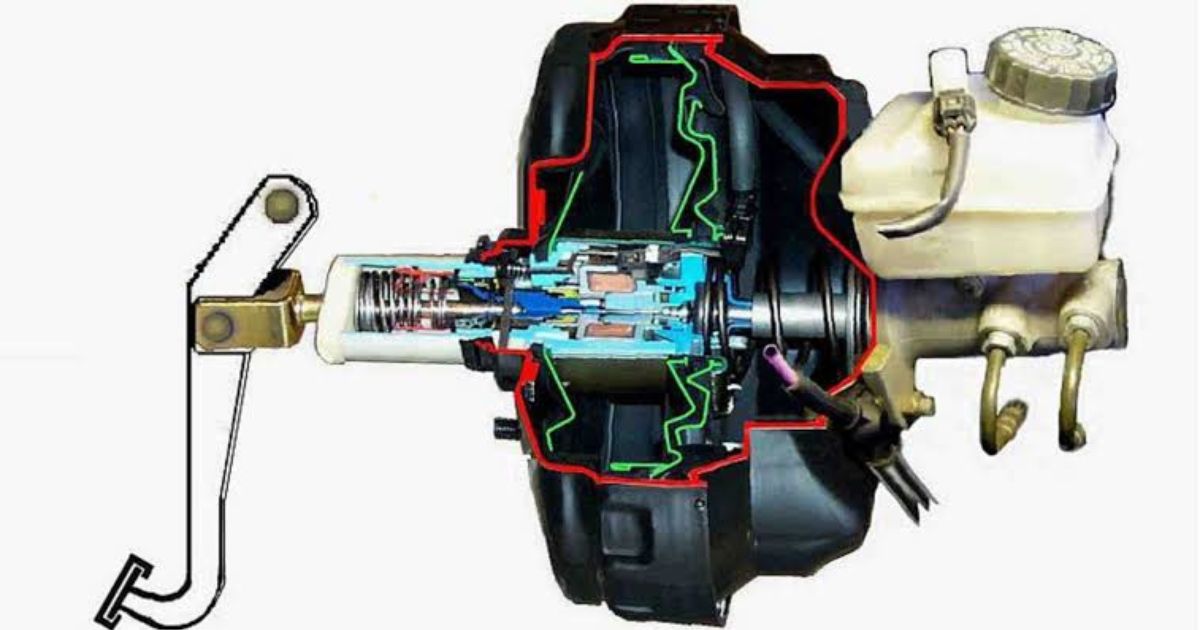Introduction to Brake Booster Diagnosis
The brake booster is an essential component of your vehicle’s braking system. It assists in applying additional force to the brakes, making it easier to stop the car with less effort on the brake pedal. If the brake booster fails, it can lead to hard braking, increased stopping distances, and potential safety risks.
This guide explains the common signs of a bad brake booster and offers steps to diagnose the issue effectively.
1. Common Signs of a Bad Brake Booster
1. Hard Brake Pedal
- A stiff or hard brake pedal is often the first and most noticeable symptom.
- You may need to apply significantly more pressure to slow down or stop the vehicle.
2. Increased Stopping Distance
- Without the power assist, it takes longer for the vehicle to come to a complete stop.
- This can be dangerous, especially in emergency braking situations.
3. Hissing Noise When Braking
- A constant or intermittent hissing sound when pressing the brake pedal can indicate a vacuum leak in the booster.
4. Engine Stalling or Rough Idle While Braking
- A leak in the brake booster can create a vacuum imbalance, causing the engine to stall or run roughly when braking.
5. Brake Warning Light or Check Engine Light
- In some vehicles, a problem with the brake booster can trigger a dashboard warning light.
2. How to Diagnose a Bad Brake Booster
Step 1: Visual Inspection
- Inspect the vacuum hose connected to the brake booster for cracks, disconnections, or damage.
- Check for brake fluid leaks around the master cylinder, as they can damage the booster’s internal diaphragm.
Step 2: Brake Pedal Test
- With the engine off, press the brake pedal several times to release any vacuum in the system.
- Keep your foot on the brake pedal and start the engine.
- If the booster is working, the pedal should slightly move downward as vacuum pressure builds.
- If the pedal doesn’t move or feels hard, the booster may be faulty.
Step 3: Listen for Vacuum Leaks
- Start the engine and press the brake pedal.
- Listen for a hissing noise from around the booster, which indicates a vacuum leak.
Step 4: Check Engine Performance During Braking
- If the engine stalls or experiences rough idle when braking, this could indicate a failing brake booster causing a vacuum issue.
3. Causes of Brake Booster Failure
🔧 Vacuum leaks due to cracked hoses or connections. 🔧 Internal diaphragm failure within the booster. 🔧 Brake fluid leaks from a faulty master cylinder affecting the booster. 🔧 Wear and tear from age and use.
4. Final Thoughts: Maintaining Brake Booster Functionality
A faulty brake booster can compromise your vehicle’s braking system, making it harder to stop safely. By recognizing the signs and performing basic diagnostic steps, you can determine if your brake booster needs repair or replacement. For complex issues or if you’re unsure, consult a certified mechanic to ensure your braking system is safe and reliable.
